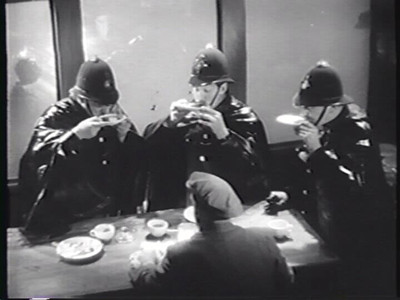DIRECTED BY: Harry d'Abbadie d'Arrast, George Fitzmaurice
STARRING: Ronald Colman, Kay Francis, Bramwell Fletcher
NOMINATED FOR: Best Sound, Recording (Oscar Lagerstrom)
I've said many negative things towards the introduction of sound in the film industry, but this is not so much a distaste in sound itself as it is a mourning of the lose of what COULD have been. The only point to that is to warn people of how future technological advances can impede on art.
Now that we've had the large clunk of transitioning between silents and talkies and are in the first Academy Awards to give out awards for sound, it's time to stop looking back and instead look forward to the artistic and technical advances sound will offer films as they begin to grow again.
Raffles belongs to the technical side of things. The film and it's sound can be both described in one word: functional. The film is a largely no-brainer light comedy that serves as a Ronald Colman vehicle (of whom I'll have much more to say about in my review following this one). Neither groundbreaking nor insulting, just functional.
The sound design on the film is equally so. Now that sound was no longer a novelty, it had to be made both unobtrusive when it wasn't needed (unlike scenes pausing to showcase their sound effects like in In Old Arizona) as well as technically sound (unlike the horrible sound levels in Coquette).
Which is not to say the sound design doesn't occasionally have fun with itself. The very first scene is that of three police officers sipping soup.

Right off the bat we're shown how dysfunctional the police force in this film are, because the sounds of biological functions are funny, and it wouldn't have been appropriate in 1930 to open a film with three police officers farting.
However, beyond this and two other unimportant moments, the sound never really brings attention to itself. The only recurring motif in the sound design is that of chiming clocks, none the least being Big Ben, since the film takes place in London. Even these barely register though, merely a way to fill the gap of silence as Raffles, the Amateur Cracksman, pulls off his little heists.

Very rarely do sounds in this film overlap. When a character walks through a room, we hear his footsteps or the floor creaking. However, when a character walks through a room while talking, we only hear the dialogue.
This sounds like no big deal in today's film world, but barely a year ago filmmakers found themselves obligated to include every single sound they could to display the novelty of it all, so it's nice to start seeing restraint in these films. The only time sounds overlap is when there's just no other way around it, like when two characters chat while in a dance club.

In many ways, Raffles may be a more important film in terms of the use of sound then some of the more artistic attempts at the time like Alibi because Raffle displays control. All the artistic talent of a painter isn't worth a damn if he has a twitchy arm, and while Raffles may be artistically uninteresting, it's at least dominate of it's functions, so much so that they finally got the camera to move again.

Remember, cameras during that time were so loud that they had to be encased in sound-proof booths so they wouldn't be picked up on the microphone. So imagine my surprise to see not one, but several scenes of characters to and away from the camera while the camera follows, complete with sound!
I really don't know how they did it. Maybe they invented a quieter camera or a more selective microphone or they dubbed the sounds and dialogue in later (and if it is a dub, it's a really, really good one). Whatever they did didn't catch on with everyone, and a lot of the films during that time still had the nailed-down camera thing going against them.
Sound is not and has never been an enemy to film, it's merely it's misuse that caused so many filmmakers and film viewers headaches. While Raffles the film is ultimately unmemorable, it does show a lot of control of it's functions, and now that the tools have been used properly, we can finally see what we can make with them.

No comments:
Post a Comment